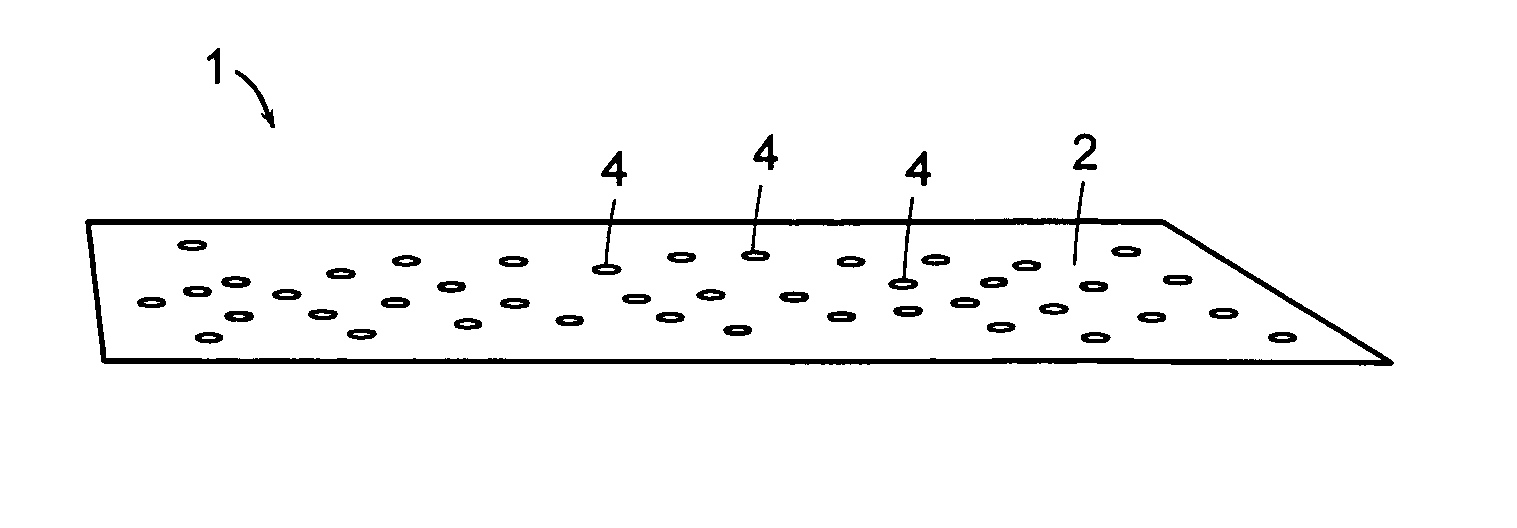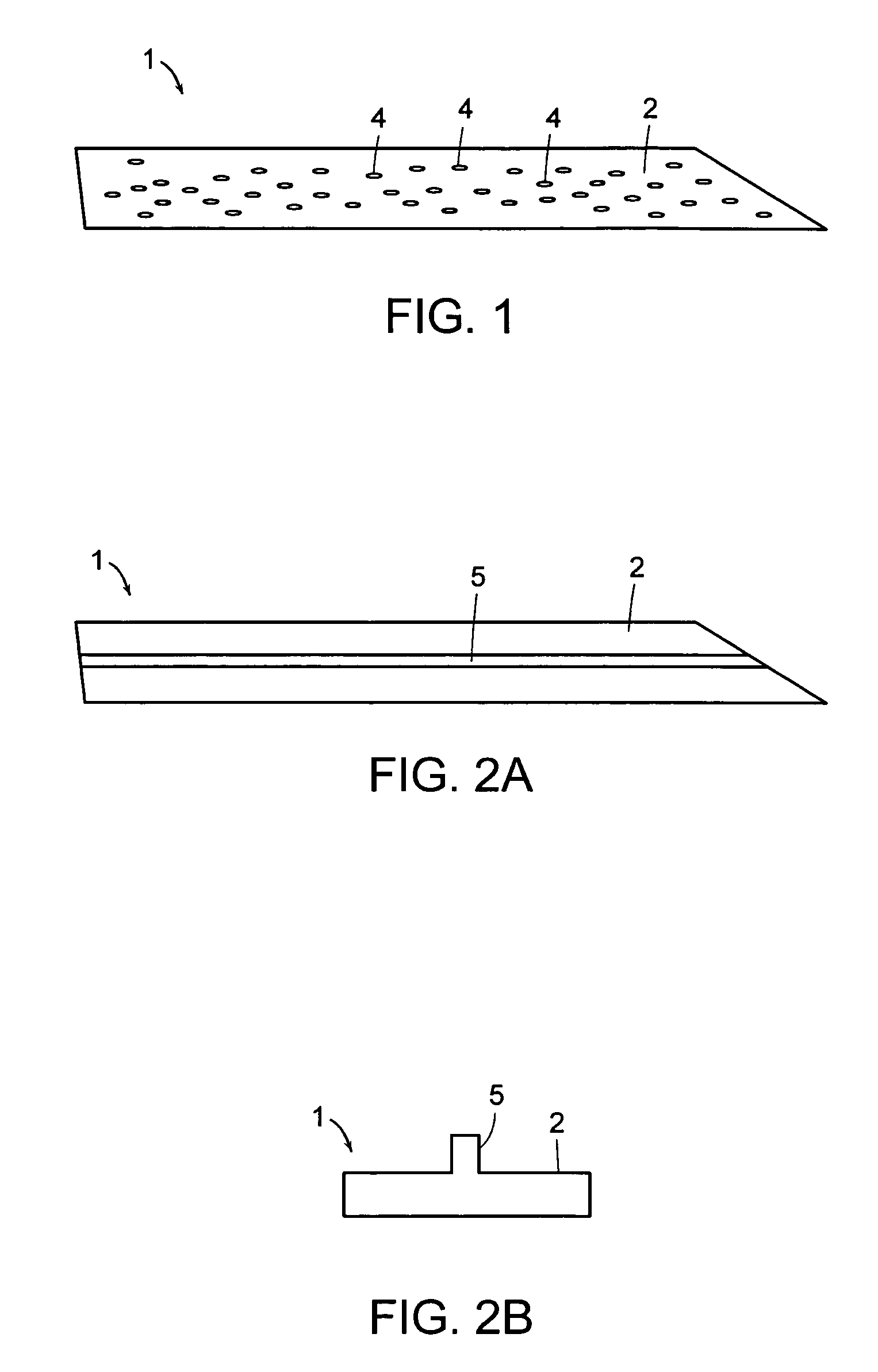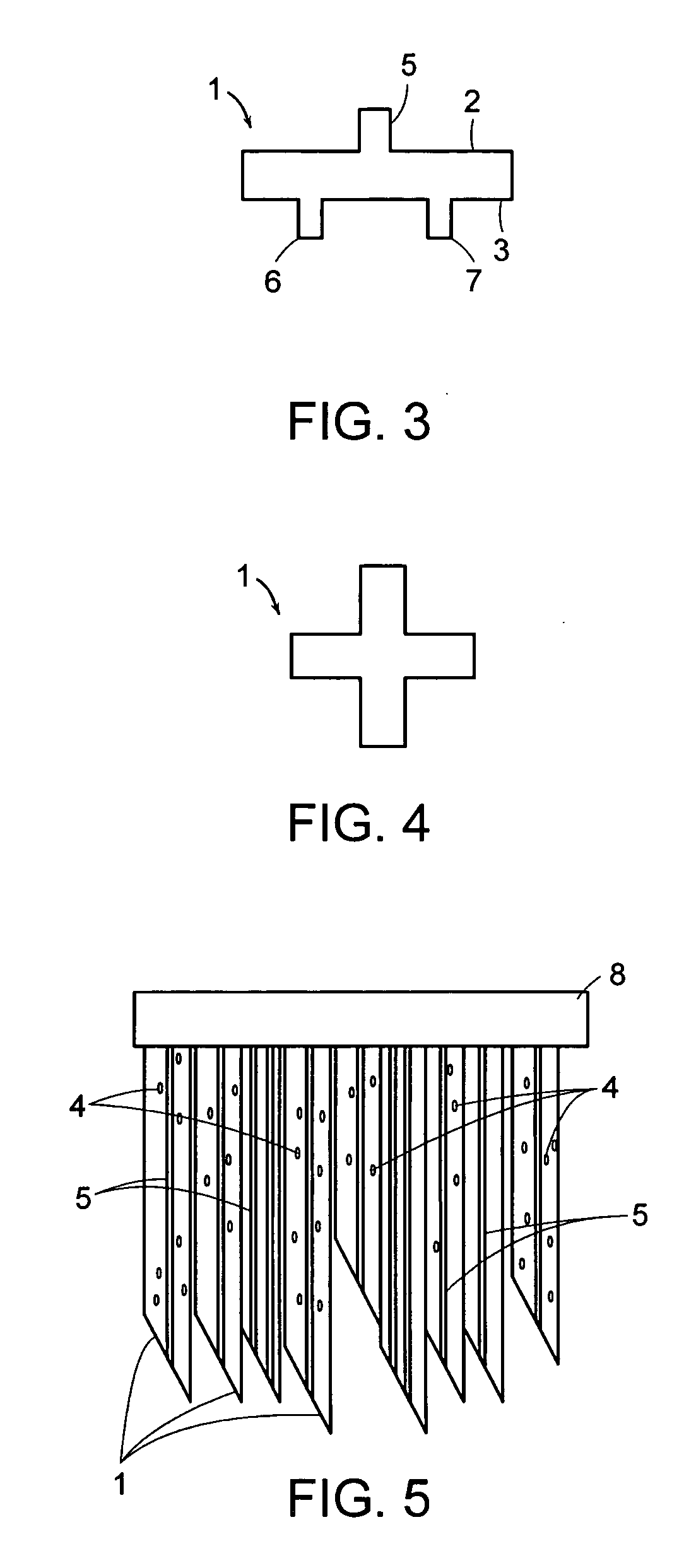Synthetic textured thatch elements for building construction and methods of making the same
a technology of textured thatch and building construction, applied in the field of synthetic thatch elements, can solve the problems of unnatural, smooth, unnatural surface of thatch elements, and natural thatch elements, and achieve the effect of efficient and economical production
- Summary
- Abstract
- Description
- Claims
- Application Information
AI Technical Summary
Benefits of technology
Problems solved by technology
Method used
Image
Examples
example 1
[0045] A non-textured thatch element was prepared to use as a control against which textured thatch elements according to the invention were compared.
[0046] 100 weight percent polyvinyl chloride (PVC) (PolyOne Geon® Compound 87416 pellet, PolyOne Corporation, Cleveland, Ohio) was added at a rate of 180 pounds per hour (lb / hr) to a 2.5 inch Welex single screw extruder equipped with a 24:1 rigid PVC type screw. The extruder was heated with the following temperature profile: Zone 1 at 355° F.; Zone 2 at 360° F.; Zone 3 at 360° F.; Zone 4 at 360° F.; Zone 5 at 365° F.; and the die 7 at 370° F. The polymer was extruded at a linear rate of 214 feet per minute (ft / min). The quench bath was set 16 inches from the die and the entire thatch element extrudate was immersed in the first two-foot section of the bath. The extrudate was then immersed in the remaining cold section to freeze in the structure and make the element straight.
[0047] The resulting thatch elements had non-textured, smooth...
example 2
[0048] A thatch element with textured top and bottom surfaces was prepared using the following method.
[0049] 99.5 weight percent PVC (PolyOne Geon® Compound 87416 pellet, PolyOne Corporation, Cleveland, Ohio) and 0.5 weight percent PVC foaming agent (Foamazol® XO-227, Bergen International, Rochelle Park, N.J.) were added at a rate of 140 lb / hr to a 2.5 inch Welex single screw extruder equipped with a 24:1 rigid PVC type screw. The extruder was heated with the following temperature profile: Zone 1 at 355° F.; Zone 2 at 360° F.; Zone 3 at 360° F.; Zone 4 at 360° F.; Zone 5 at 365° F.; and the die 7 at 370° F. The polymer was extruded at a linear rate of 214 ft / min. The quench bath was set 16 inches from the die and the entire polymer extrudate was immersed in the first two-foot section of the bath. The polymer extrudate was then immersed in the remaining cold section to freeze in the structure and make the element straight.
[0050] The resulting thatch elements had about 0.1 to about ...
example 3
[0051] A thatch element with a textured top surface and a non-textured bottom surface was prepared using the following method.
[0052] 99.0 weight percent PVC (Polyone Geon Compound 87416 pellet, Polyone Corporation, Cleveland, Ohio) and 1.0 weight percent PVC foaming agent (Foamazol® XO-227, Bergen International, Rochelle Park, N.J.) were added at a rate of 140 lb / hr to a 2.5 inch Welex single screw extruder equipped with a 24:1 rigid PVC type screw. The extruder was heated with the following temperature profile: Zone 1 at 355° F.; Zone 2 at 360° F.; Zone 3 at 360° F.; Zone 4 at 360° F.; Zone 5 at 365° F.; and the die 7 at 370° F. The polymer was extruded at a linear rate of 214 ft / min. Only the bottom of the polymer extrudate was contacted with the first two feet of quench water, instead of immersing the entire polymer extrudate under water. The entire polymer extrudate was then immersed in the remaining cold section to freeze in the structure and make the element straight.
[0053] ...
PUM
| Property | Measurement | Unit |
|---|---|---|
| Moldable | aaaaa | aaaaa |
Abstract
Description
Claims
Application Information
 Login to View More
Login to View More - R&D
- Intellectual Property
- Life Sciences
- Materials
- Tech Scout
- Unparalleled Data Quality
- Higher Quality Content
- 60% Fewer Hallucinations
Browse by: Latest US Patents, China's latest patents, Technical Efficacy Thesaurus, Application Domain, Technology Topic, Popular Technical Reports.
© 2025 PatSnap. All rights reserved.Legal|Privacy policy|Modern Slavery Act Transparency Statement|Sitemap|About US| Contact US: help@patsnap.com



